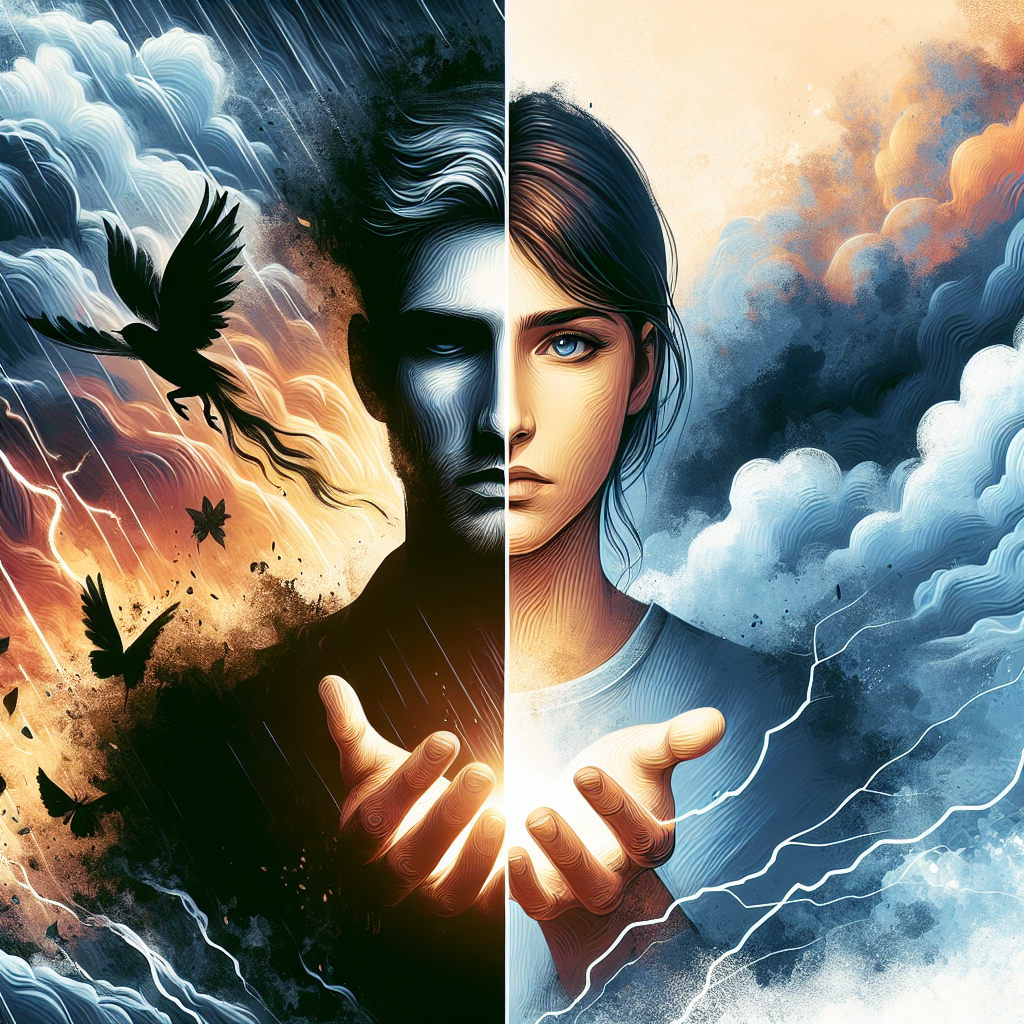The Psychology of Enemies-to-Lovers: Understanding Our Fascination with Bully Romance
Meta Description: Discover the psychological appeal behind bully romance novels, from power dynamics to redemption arcs, and why this controversial genre continues to captivate readers worldwide.
In the vast landscape of romance literature, few subgenres spark as much debate as bully romance. These stories, featuring antagonistic characters who evolve into love interests, often leave readers divided—some find them deeply uncomfortable, while others can't get enough of the emotional intensity they provide.
But what drives our fascination with these complex narratives? The answer lies not in the surface-level dynamics, but in the profound psychological needs these stories fulfill. From our innate desire to witness transformation to our attraction to emotional complexity, bully romance taps into fundamental aspects of human psychology that explain its enduring popularity.
The Psychological Foundation of Transformation Stories
The Redemption Archetype
At the heart of every compelling bully romance lies a powerful psychological concept: the redemption arc. This narrative structure resonates deeply with readers because it mirrors our own experiences with personal growth and second chances.
The transformation of an antagonistic character serves as a metaphor for the potential we all possess to change and improve. When we witness a "bully" character evolving from cruelty to vulnerability, we're experiencing a form of vicarious healing—the psychological satisfaction of seeing growth and positive change occur, even in fiction.
The Attraction to Emotional Complexity
Human psychology is naturally drawn to complexity over simplicity. Bully romance characters are rarely one-dimensional villains; instead, they're multifaceted individuals with hidden depths, past traumas, and conflicting motivations. This complexity mirrors real-life relationships, where people are neither entirely good nor entirely bad.
Research in social psychology suggests that we're more likely to form strong emotional connections with characters who display psychological depth and internal conflict. The bully who shows moments of tenderness, or the antagonist who reveals their vulnerabilities, creates a cognitive dissonance that keeps readers emotionally invested.
The Science Behind Power Dynamics in Romance
Understanding Dominance and Submission Patterns
Bully romance often explores complex power dynamics that reflect real-world relationship patterns. From a psychological perspective, these dynamics can be appealing because they allow readers to explore themes of control, surrender, and mutual respect in a safe, fictional environment.
The initial power imbalance between characters creates tension that, when resolved through character growth and mutual understanding, provides significant emotional payoff. This progression from inequality to partnership satisfies our innate desire for justice and balance.
The Role of Emotional Catharsis
The intense emotions present in bully romance—anger, frustration, hurt, and eventual love—provide readers with a form of emotional catharsis. By experiencing these powerful feelings through fictional characters, readers can process their own emotional experiences and relationships in a safe space.
This cathartic release is particularly powerful when the story resolves positively, allowing readers to experience the satisfaction of emotional healing and growth without the real-world risks.
Why Readers Are Drawn to Enemies-to-Lovers Narratives
1. The Thrill of Emotional Intensity
Bully romance delivers an emotional rollercoaster that many readers find irresistible. The high-stakes emotional tension between characters creates a reading experience that's both challenging and rewarding. Unlike more straightforward romance narratives, these stories demand emotional investment and provide intense payoffs.
The neurological response to this emotional intensity is similar to what we experience during exciting or challenging activities—the brain releases dopamine and adrenaline, creating a genuinely addictive reading experience.
2. The Satisfaction of Earned Love
In bully romance, love isn't instantaneous or easy—it's earned through struggle, growth, and mutual understanding. This mirrors healthy real-world relationships, where deep connections develop over time through shared experiences and personal development.
The psychological principle of effort justification explains why readers find these hard-won relationships more satisfying than easier romantic paths. When characters must work to overcome their differences and past behaviors, their eventual union feels more meaningful and authentic.
3. Exploring Taboo Emotions Safely
These stories allow readers to explore complex, sometimes uncomfortable emotions in a controlled environment. Feelings like anger, resentment, and the desire for emotional dominance can be examined through fiction without real-world consequences.
This safe exploration of difficult emotions can actually be psychologically beneficial, allowing readers to better understand their own emotional responses and relationship patterns.
The Importance of Character Growth and Accountability
Transformation vs. Glorification
The key distinction between problematic and psychologically satisfying bully romance lies in how the narrative handles character growth. Effective stories in this genre don't glorify harmful behavior—instead, they demonstrate genuine transformation and accountability.
Characters must:
- Acknowledge their harmful actions
- Take responsibility for the pain they've caused
- Demonstrate consistent change through their behavior
- Earn forgiveness rather than receiving it automatically
Modeling Healthy Conflict Resolution
Well-crafted bully romance can actually model healthy relationship dynamics by showing how conflicts can be resolved through communication, empathy, and personal growth. These stories demonstrate that while initial attraction might be based on tension, lasting love requires mutual respect and understanding.
The Dark Side: When Bully Romance Goes Wrong
Recognizing Problematic Patterns
Not all bully romance is created equal, and it's important to recognize when these narratives cross the line from psychologically satisfying to potentially harmful. Warning signs include:
- Romanticizing abuse without showing genuine change
- Victim-blaming or suggesting that harmful behavior is acceptable if motivated by love
- Lack of accountability from the antagonistic character
- Normalizing toxic relationship patterns
The Importance of Critical Reading
Readers can enjoy bully romance while maintaining critical thinking about the relationship dynamics portrayed. The key is understanding the difference between fantasy exploration and real-world relationship goals.
Finding Quality Enemies-to-Lovers Stories
What to Look For
When seeking psychologically satisfying bully romance, readers should look for:
- Complex character development that shows genuine growth
- Balanced power dynamics that evolve throughout the story
- Emotional authenticity in both conflict and resolution
- Realistic consequences for harmful actions
- Mutual respect in the eventual romantic relationship
The Role of Author Intent
The best bully romance authors understand the psychological appeal of their genre while remaining mindful of the messages their stories convey. They craft narratives that satisfy readers' desire for intensity and transformation while promoting healthy relationship dynamics.
Conclusion: Embracing Complexity in Romance
The enduring appeal of bully romance lies not in its surface-level dynamics, but in its ability to explore fundamental aspects of human psychology—our capacity for change, our attraction to complexity, and our desire for emotional intensity. When done thoughtfully, these stories provide readers with valuable insights into relationship dynamics, personal growth, and the power of redemption.
Rather than dismissing this genre entirely, we can appreciate its psychological complexity while remaining critical consumers of the content we choose to engage with. The key is understanding that the appeal of bully romance lies not in endorsing harmful behavior, but in exploring the transformative power of love, accountability, and personal growth.
By recognizing the psychological needs these stories fulfill, we can better understand not only why they're popular, but how they can be crafted and consumed in ways that are both emotionally satisfying and psychologically healthy.
The exploration of complex relationship dynamics in fiction allows us to better understand ourselves and our own emotional responses. Whether you're drawn to the intensity of enemies-to-lovers narratives or prefer other romance subgenres, the key is finding stories that resonate with your personal psychology while promoting healthy relationship models.
💝 Ready to Explore More Romance?
If you enjoyed this article about From Enemies to Lovers writing, discover thousands of captivating love stories on our platform.
Download App







